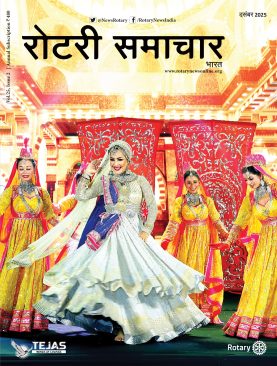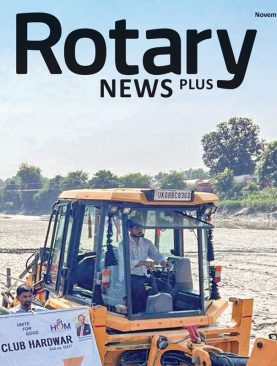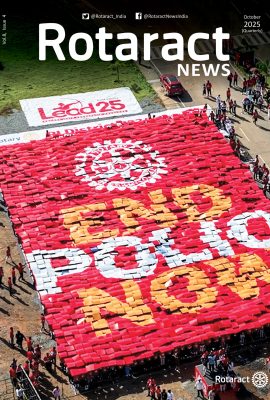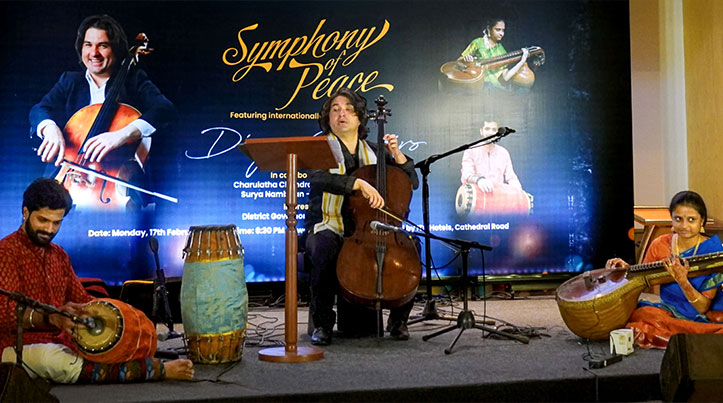Listening to Brazilian cellist and Rotary Peace Fellow Diego Carneiro in Chennai was nothing short of mesmerising. With his cello, he brought the Amazon rainforest to life — the delicate chirping of birds, the gentle rush of water and the deep roar of a leopard. If that was impressive, what followed was even more so. He had the audience swaying in admiration as he played English Note, a Carnatic classic popularised by Madurai Mani Iyer, which he had astonishingly mastered in just 30 minutes before the show. The evening turned into a joyous sing-along as he performed Ae mere Zohra Jabeen, Jai Ho!, Saare Jahan Se Achha and more. He was accompanied by Charulatha on the veena, and Surya Nambeesan on the mridangam at a programme which was organised by RC Madras East, RID 3234.
Carneiro was on a transformative musical tour across India in February, spreading the universal language of music to inspire harmony and connection. As he visited Delhi, Chandigarh, Kochi, Coimbatore and Chennai, he captivated audiences with soulful performances that transcended cultural barriers. Interestingly, music is its own language and needs no interpreter. More than just concerts, his visit was a mission to spread the message of peace, unity and resilience through the power of sound.
He has recently been appointed as Dean of the Department of Music at the University of the Hemispheres in Quito, Ecuador. Around 560 Venezuelan refugee musicians are part of his orchestra that has performed over 300 concerts last year. He was on his way to attend the Presidential Peace Conference (Feb 20–22) in Istanbul.
Rotary News caught up with Carneiro after the show in Chennai, to talk about his journey and share his perspective on peace.
Excerpts…
How did you become a Rotary Peace Fellow?
I became a Rotary Peace Fellow after being invited by RC Charlotte in North Carolina. They had heard about my work, particularly a project I led during Covid titled Orchestrating Peace. This initiative took music into refugee camps and hospitals, using it as a tool for healing and connection.
But my journey toward peacebuilding started long before that. Even before I became a musician, I was already a Peace Fellow in spirit. My parents nurtured in me a deep sense of service. As a child, they took me to hospitals and homecare centres to share food and support those in need. The first week I learned to play the cello, they took me to perform for people in such places. That was when I first understood the power of music — not just to entertain, but to heal, connect and to bring peace.
I officially started my Peace Fellowship in 2023 at the Makerere University in Uganda. I have now graduated and received my certificate from RI President Stephanie Urchick.
What are the key takeaways from your Rotary experience?
The Peace Center in Uganda is where you truly see peacebuilding in practice. Unlike some other Peace Centers in the US or Japan, where the focus might be more theoretical, in Uganda, everything is hands-on.
We visited numerous communities and projects, including vulnerable zones near the Congo border. One of the most eye-opening experiences was meeting a refugee community in this region. People from Rwanda, Uganda and other countries who had experienced conflict and displacement were living together in harmony.
When I arrived, I noticed a school at the top of a mountain. I asked where the students were, and to my surprise, I was told, “They are meditating.” Meditation? In Uganda? That was unexpected. When the teachers arrived, dressed in traditional Indian attire (sari), I learned that they were from Kenya and Uganda but had been trained at the Isha Foundation (Coimbatore, Tamil Nadu). They had established a school inspired by Sadhguru (Jaggi Vasudev), right in the middle of this conflict zone.
What struck me most was the mindset of the students. Despite their difficult circumstances — many without parents or stable homes — they were incredibly thoughtful and curious. When I performed for them and opened the floor for questions, a 12-year-old boy asked something profound. ‘Does your instrument also play happy music?’ I was caught off guard when he asked me this question. It made me realise that I had been playing mostly melancholic music without even noticing it. I thought I was making people feel normal, but he saw the cello as too sad.
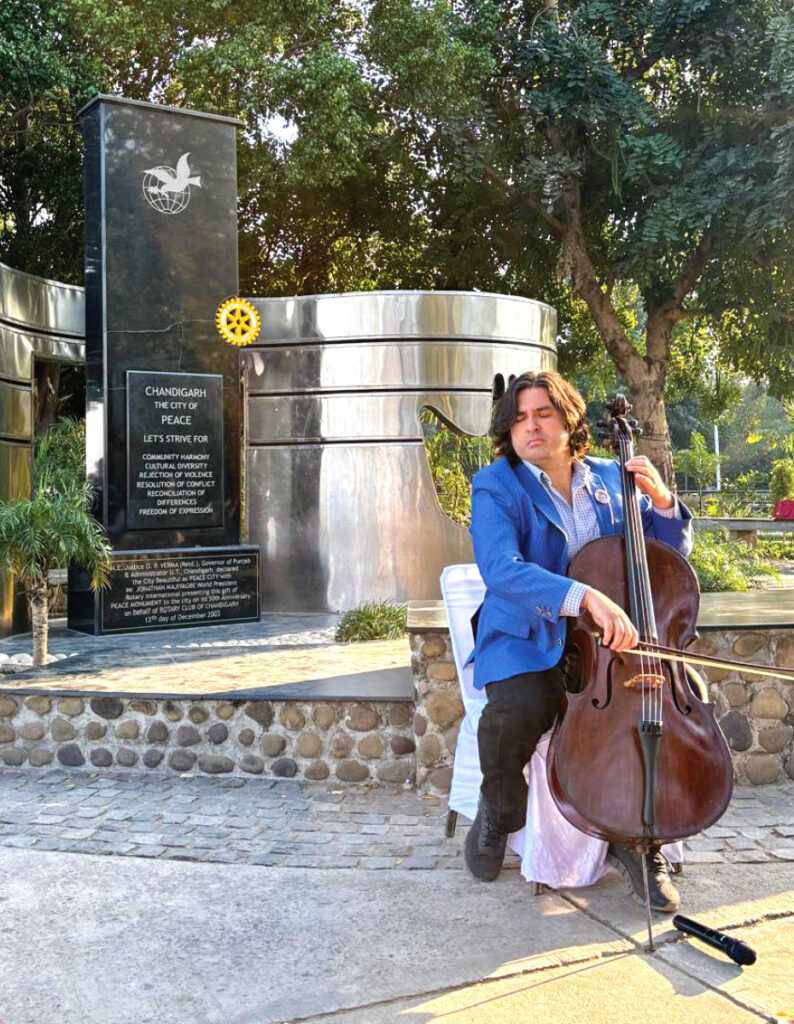
That is so interesting!
Oh yes. For a moment, I paused. Then, I decided to play something different — music inspired by the Amazon rainforest, filled with bird songs and nature’s rhythms. Immediately, he connected to it. That moment was a turning point for me. It made me question: Am I truly bringing happiness and peace to people, or am I just sharing my own emotions?
That experience reshaped my journey. It made me more curious about how music affects emotions. When people dance and sing, they don’t feel sad. So, I began exploring how sound can create positive emotions and contribute to peace.
This led to my Equator Line Project, a symbolic journey around the equator to explore how music can equalise emotions across cultures. I started collaborating with scientists to study how sound can reduce stress without people even realising it, simply by making them feel peaceful. From here, I’ll be travelling to conflict zones, including the borders of Syria and Turkey, to test how different cultural sounds impact people’s emotions.
This journey also inspired me to write a book titled Paths to Peace. I hope Rotary can help promote it, because while every culture is unique, our common goal should always be peace.
Music can be a medicine. It can make people healthier, more peaceful. It can create a world where peace is not just an idea, but a reality.
How has the response been from Indian audiences?
The Indian audience has been one of the most incredible I’ve ever experienced — so much love, kindness and humility. People helped me in different ways, and the Rotarians were extraordinary.
One key person who made this happen was PDG Sunil Zachariah. He had the vision to connect everything and bring people together. I also met PDG Kamlesh Raheja in Coimbatore, who is related to another Kamlesh in North Carolina — the very club that sponsored me as a Peace Fellow. It’s amazing how these connections unfold!
I performed for thousands of Rotarians, starting in Chandigarh with an audience of 600 people. The next day, there were 700 people. Next came Delhi. I met incredible musicians and talents along the way. India has been a transformative country for me. I will carry this experience with me and promote it in the West in every way possible. One of the highlights was playing local music, which allowed me to truly connect with the people. That’s what music is about — building bridges, not just between notes, but between hearts. And I hope to return.
What does peace mean to you?
Peace, to me, is like intonation in music — when everything is in harmony. Music plays a crucial role in that connection because it acts as a bridge. Before I perform, I try to find peace within myself.
For me, music must always have a purpose. And my purpose is to create peace and build connections between cultures and nations.
Peace begins with listening, not just to words, but to people — to their emotions, their struggles, their dreams. When musicians play together, they don’t just play their own parts. They listen, respond and find harmony. An orchestra is a perfect example of what the world could be: a place where different voices, instruments and cultures come together. Just like music, peace does not start globally; it starts locally. It begins with our families, our communities, our daily interactions. If we learn to create harmony in small ways, these ripples will expand outward until they reach the whole world.
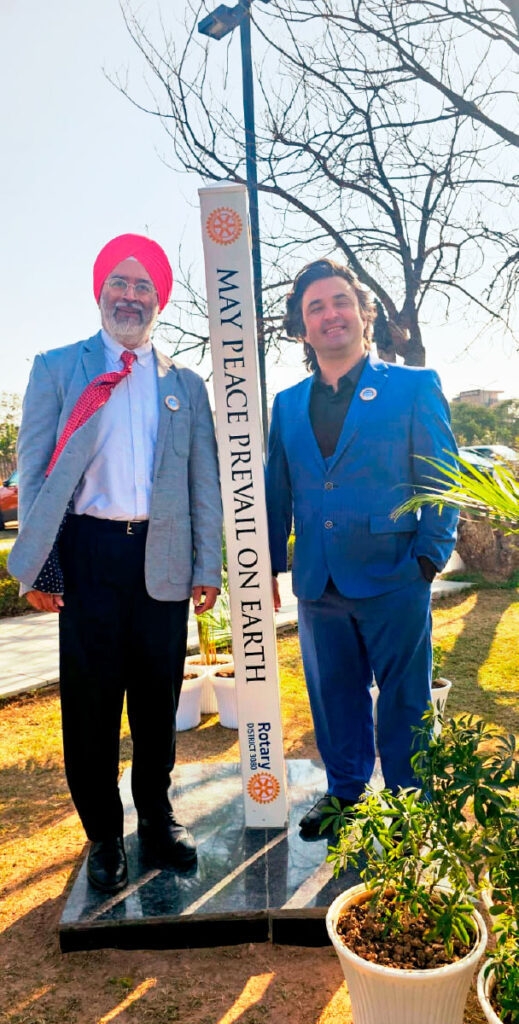
Tell us something about the Amazon region from where you come.
The Amazon is alive with sound. I grew up surrounded by these natural melodies, and in many ways, they shaped my musical journey. Music formally entered my life when I was around 11, and at 12, I performed at my first concert as a cellist at the Teatro da Paz, or the Peace Theatre. Looking back, it feels symbolic. I started my musical journey in a place named after peace, and today, my music is dedicated to that very cause.
I grew up without witnessing war firsthand, but somehow, my life’s work has led me to places where conflict and displacement are everyday realities. It all started with that performance in the Amazon, but it prepared me for what I do today — using music to heal, to connect and to give hope to those in need.
I believe music can be a medicine. It can make people healthier, more peaceful. And if we learn to use it with intention, we can create a world where peace is not just an idea, but a reality.
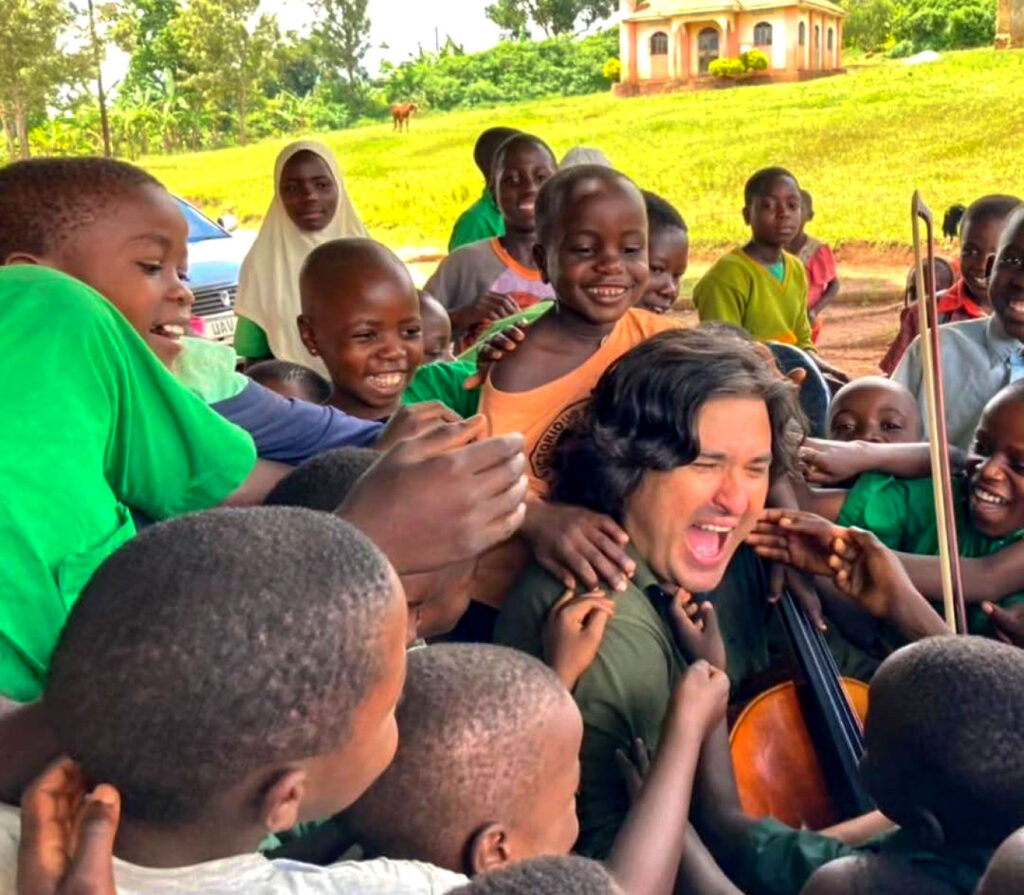
Would you like to recall for our readers any memorable moments?
In 2016, I was performing in Ecuador when a devastating earthquake struck. I started a youth orchestra to bring hope to affected communities, and it quickly grew. The troupe travelled to Brazil, Colombia and performed at the United Nations in Geneva.
Two years later, Venezuelan refugees began arriving in Ecuador. One of the first calls I received was from a father who had just arrived with his family. He said: ‘We have no home, no food; but my children need music. Please help.’ That moment changed everything. I integrated these refugee musicians into our orchestra. We receive no formal sponsorship, but we’ve built a network of supporters who believe in what we do. My goal is to make this orchestra sustainable so that it continues to provide stability and purpose for displaced musicians.


